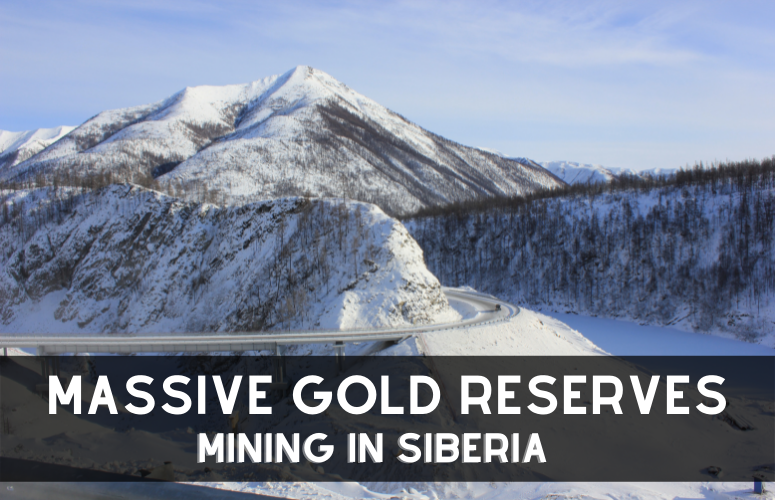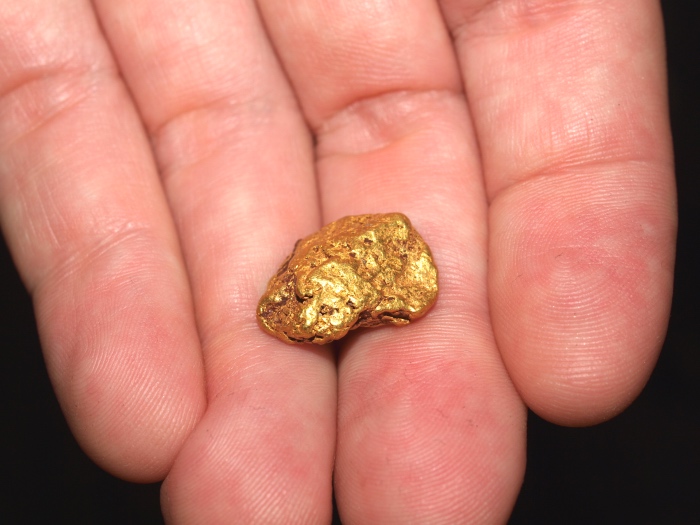
The Russian writer Maxim Gorki may have described Siberia as a land of “death and chains,” but this vast region that runs from the Ural Mountains to the Pacific Ocean, has never deterred gold seekers. It’s one of the coldest places on earth and has some of the harshest terrain anywhere but its riches draw the brave and the feeble-minded alike.
Siberia is a remote stretch of land historically synonymous with exile and misery – hosting prisoners condemned to hard labor in a region where nearly half of the landscape is covered in permafrost. Despite all these, Siberia is today experiencing what can be described as the second Siberian gold rush.
In 2020, the Sukhoi Log mine in the remote Irkutsk region of Siberia, announced that analysis showed it has 40 million ounces of gold – making it the world’s biggest reserve, and effectively representing more than a quarter of Russia’s gold reserves.
History of Siberian Gold Mining
The Siberian gold rush started in 1745 when a peasant discovered gold flakes in the Ural Mountains and peaked in the early 1800s when Russia became a major world producer of gold. However, early records show that gold was used in Siberia more than 2,600 years ago. A royal tomb discovered in the Republic of Tuva (part of Siberia), had a collection of valuables buried with a warrior tsar that were a clear indication of the magnificent possessions of early civilizations.
The tomb, known as Arzhan 2, contained 9,300 gold pieces including beads, earrings and pendants weighing more than 20 kilograms. These valuable objects, preserved in a museum in the local capital Kyzyl and others in St Petersburg may not attest to gold mining in the region but are evidence of the use and value of gold in ancient Siberia.
The Siberian gold rush peaked in the 1830s with areas such as the Sukhobuzimsky district, some 45 miles north of Krasnoyarsk city forming the core of activities. The momentum was sustained through the 1840s and the full potential of Siberia’s gold industry was only hampered by the poor transport network within the region. The Trans-Siberian Railway, built between 1891 and 1916, changed the Siberian landscape, bringing in more than four million Russian immigrants between 1906 and 1914.
Covering 9,289 kilometers (5,772 miles), from Moscow to Vladivostok, the railway opened up Siberia to the rest of Russia and the Far East. By 1915, 57,000 workers were employed in Siberian gold mines, extracting 46,655 kg of gold between 1910 and 1914. Picks and shovels were the tools of trade but the abundance of water in Siberia made the use of sluice boxes preferable to work in alluvial as well as placer deposits.

Gold Mining Areas of Siberia
In 1801, Russia produced one percent of the world’s gold, in 1850 it was 40 percent, and in 2020 it was 9.5 percent (second in the world after China’s 11 percent). The vast majority of this gold is produced in Siberia, making this region an important part of Russia’s gold equation.
While the Central Siberian Plateau seems to be exceptionally rich with large deposits of gold, other areas of Siberia have robust gold mining operations and exploration activities continue to reveal the riches in this region.
The principal gold mining regions are:
Other areas include:
Notable Gold Mines
Some of the large mines in Siberia include:
The Rundown
The extremely cold weather of Siberia and the remoteness of its landscape have previously hampered the full exploitation of its resources. Recent discoveries are an indication that this region has massive, undiscovered gold deposits waiting to be extracted.
Although panning for gold is illegal in most parts of Russia, a pilot program in Magadan region of Siberia is experimenting with small scale gold prospecting to counter a thriving black market. If successful, it may be rolled out across Siberia and the rest of Russia, bringing opportunity to millions of people.
The search for a golden fortune may have started in Siberia more than a century ago but is alive today for prospectors ready to explore the land notorious for permafrost, but teaming with virgin forests and sitting on treasure.
Next: Dangers in the World’s Deepest Mines










